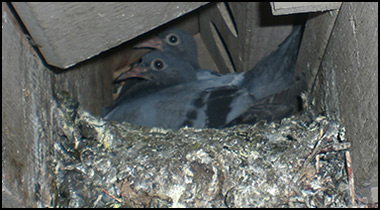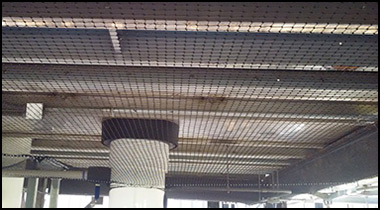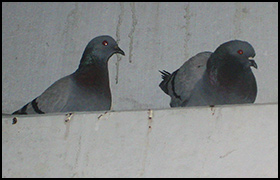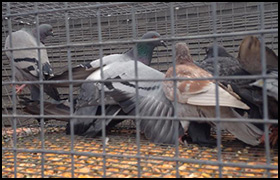San Antonio Bird Control
Welcome to Bird Removal of San Antonio! We specialize in the humane and effective resolution of human/bird conflicts in the San Antonio metro region, and throughout Texas. Whether you have a single bird in a building, or need to prevent pigeon roosting (and bird droppings) on a large architectural project, we can solve your San Antonio bird problem effectively and professionally. We install exclusion materials to keep birds away, and even provide pigeon trapping as a means of San Antonio bird removal. We are not a pest control company, but rather wildlife, bat, and bird specialists only. Click on our San Antonio Prices page to find out more about our prices for bird control work. You can also read the topics addressed on this website to learn more about how to resolve your specific bird conflict. We look forward to hearing from you.

San Antonio Bird Removal & Structural Repairs

Exclusion Netting & Spike Installation

Texas Bird Trapping & More
Call 24/7 to discuss your San Antonio bird problem.
Same-day or next-day appointments: 210-672-4385
Thorough inspection of your property.
Written estimates for bird project.
Fully Texas licensed and insured.
Structural bird exlusion netting.
Anti-roosting spikes and shock track.
Aurel dispersion and bird harrassment.
Bird dropping cleanup and sanitation services.
Bird damage repair and building exclusion.
Our Service Range - 210-672-4385



For bird control and general wildlife removal, visit the www.sanantoniopestanimal.com website.
Do More Pigeons Live in Urban or Wild areas?
To answer this question, you must first know what factors influence what location a pigeon will choose as a habitat. What are some of the factors that determine where a pigeon will stay?
Availability of food
Pigeons have been known to love seeds and grains. They mainly rely on food from human farms or their storage units. In the wild, there is a chance that there may be multiple farms and the farms may even have grains stored in their stores. That way they just have to search for an opening into the stores and they feed on plenty of grain. On the other hand, pigeons that have to live in the urban area have to search for the available grains or seeds which may be insufficient depending on the urban area. Many pigeons in the urban areas have been known to suffer from malnutrition and hunger. They mostly have to feed in garbage from dustbins to boost their nutrients. As such, it is clear that in terms of food availability, living in the wild in more favorable.
Availability of nesting material
Pigeons like building nests as opposed to living in holes and dens. As such, they have to search for nesting material in the form of dried grass and other similar materials. In the wild, there are lots of trees and fields from where they can get the nesting material from and this is what attracts most pigeons to live in the wild. In the urban areas, nesting material is scarce and it often takes a lot of effort to compile enough nesting material to make a nest big enough to accommodate the mature pigeons and their babies.
Availability of nesting areas
For a pigeon to build a nest, it must ensure that the area around it is safe for itself and any babies that may hatch. In the wild, there are lots of enemies that may make it hard to find a suitable nesting spot. In the urban areas, there are many abandoned buildings and empty structures. This means that there are very many places to build nests. In addition, there are few predators in towns and also less competition from other types of birds. This means that in this case, the birds would prefer living in urban areas instead of in the wild.
As seen above, there are three major factors that influence a pigeon’s choice of habitat. However, availability of food is the paramount of all three. Even though there are many places to build nests in urban areas, the insufficiency of food is the main problem that makes urban areas unsuitable for pigeon habitation. However, there are still large numbers of pigeons that thrives in urban areas. This happens in places where people feed untamed pigeons as a recreational activity.

